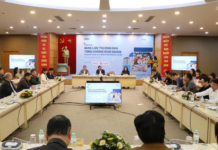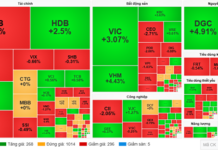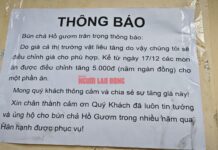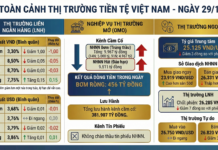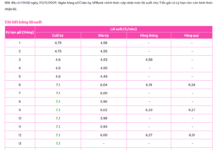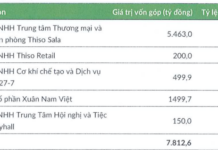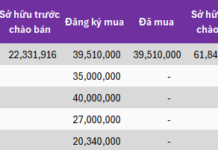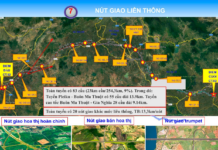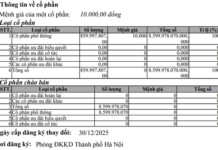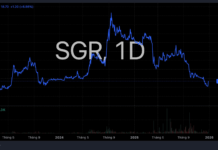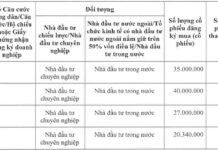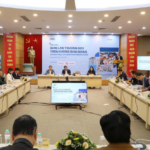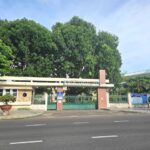This is a proposed common visa agreement for Southeast Asia that could significantly impact Vietnam’s economy, tourism industry, and diplomatic relations with other ASEAN countries, according to Dr. Nuno F. Ribeiro, Senior Lecturer in Tourism and Hospitality Management at RMIT University Vietnam.
The Southeast Asia common visa initiative, proposed by Thailand, aims to facilitate travel for foreign citizens across six ASEAN countries: Cambodia, Malaysia, Myanmar, Laos, Thailand, and Vietnam. With this visa, travelers would be able to explore these six nations with ease, enhancing their experience in the region.
Dr. Ribeiro, who is also the Chairman of the Tourism and Hospitality Subcommittee of EuroCham Vietnam, highlights the potential benefits for Vietnam’s tourism industry. This agreement is expected to attract more international visitors, especially from high-income and geographically distant markets that Vietnam is keen to tap into, such as Europe and North America. These travelers would be able to include Vietnam as part of their Southeast Asian itinerary.
The revenue generated from this influx of tourists would boost Vietnam’s economy and positively impact its balance of payments. The World Travel Magazine (TTW) has likened this initiative to the “new Schengen” of Southeast Asia, referring to the agreement that revolutionized European travel in 1995.

Illustration: Unsplash.
Just as the Schengen Agreement, signed in 1985, led to the formation of the Schengen Area in 1995, comprising 27 European countries with a common visa policy, the Southeast Asia common visa has the potential to create a similar “boom” in tourism for the region.
According to Dr. Ribeiro, in addition to its direct impact on tourism, the common visa could also create numerous job opportunities and attract more foreign direct investment, further enhancing the dynamism of Vietnam’s tourism industry and its economy as a whole.
This proposal has garnered strong support from various stakeholders, including governments, businesses, travel companies, and academics. The World Economic Forum has endorsed the idea of an ASEAN visa since 2016, underscoring its potential to strengthen ASEAN’s integration and competitiveness in the global tourism market.
A study by the United Nations World Tourism Organization (UNWTO) estimated that simplifying visa procedures could significantly increase international tourist arrivals to ASEAN, along with tourism revenue and employment. The study projected a 3.0-5.1% increase in tourist arrivals, a 2.8-4.7% rise in tourism revenue, and a 1.6-3.1% boost in employment.
Maximizing Opportunities
To make the most of this initiative, Dr. Ribeiro suggests that Vietnam take several preparatory steps. These include establishing bilateral and multilateral agreements with ASEAN and other countries, building on the nation’s successful diplomatic efforts to promote tourism through bilateral agreements, as highlighted in the recent report by the Australia Vietnam Policy Institute (AVPI).
Vietnam and other member countries need to establish a legal framework, address common security and surveillance concerns, and ensure the compatibility of their visa policies. This involves agreeing on common entry rules for third-country nationals and harmonizing their entry policies for international visitors.
Additionally, participating countries must align their technology and security infrastructure. If the common visa becomes a reality, Vietnam should prepare for a potential surge in international tourist arrivals. This includes upgrading infrastructure and transportation systems, focusing on interconnectivity between different modes of transport.

Illustration: Unsplash.
Vietnam should also revise its entry procedures and information security protocols and invest in training and skill enhancement for its workforce. These steps align with Vietnam’s recently approved Tourism System Planning for the period of 2021-2030, with a vision towards 2045 (Decision 509/QD-TTg signed by Deputy Prime Minister Tran Hong Ha on June 13, 2024).
While there are considerations and challenges to address before implementing the common visa, experts and policymakers remain optimistic about its potential. A best-case scenario could see the initiative realized within two years, while a more realistic timeline might be five years. However, given the importance and rapid development of the tourism industry in Vietnam and Southeast Asia, things could move faster than expected.
Through strategic planning and collaboration with ASEAN members, Vietnam can leverage the benefits of this common visa initiative to boost its tourism industry and solidify its position as a top tourist destination in the region.
Total FDI inflows to Vietnam in January 2024 reach $2.36 billion, up 40.2% compared to the same period last year.
According to statistics from the General Statistics Office, the total amount of foreign direct investment (FDI) in Vietnam signed as of January 20, 2024, including newly registered capital, adjusted registered capital, and capital contribution, share purchases by foreign investors reached 2.36 billion USD, representing a 40.2% increase compared to the same period last year.
Transfers to Ho Chi Minh City reached over $9.5 billion in 2023
Despite the global economic downturn, inflation, and armed conflicts impacting economic growth and related remittance factors, the amount of remittance flowing into Ho Chi Minh City, Vietnam in 2023 still maintained a strong growth rate, reaching 9.46 billion USD.
2024 – Vietnam’s Year of Progress
2024 brings few optimistic signals for the global economy, but it is a year of hope for Vietnam and its economy, according to former Deputy Prime Minister of Germany, Philipp Rösler. Vietnamese people, who always have deep affection for their homeland, have now “revealed” their “grand plans” for this special year.

